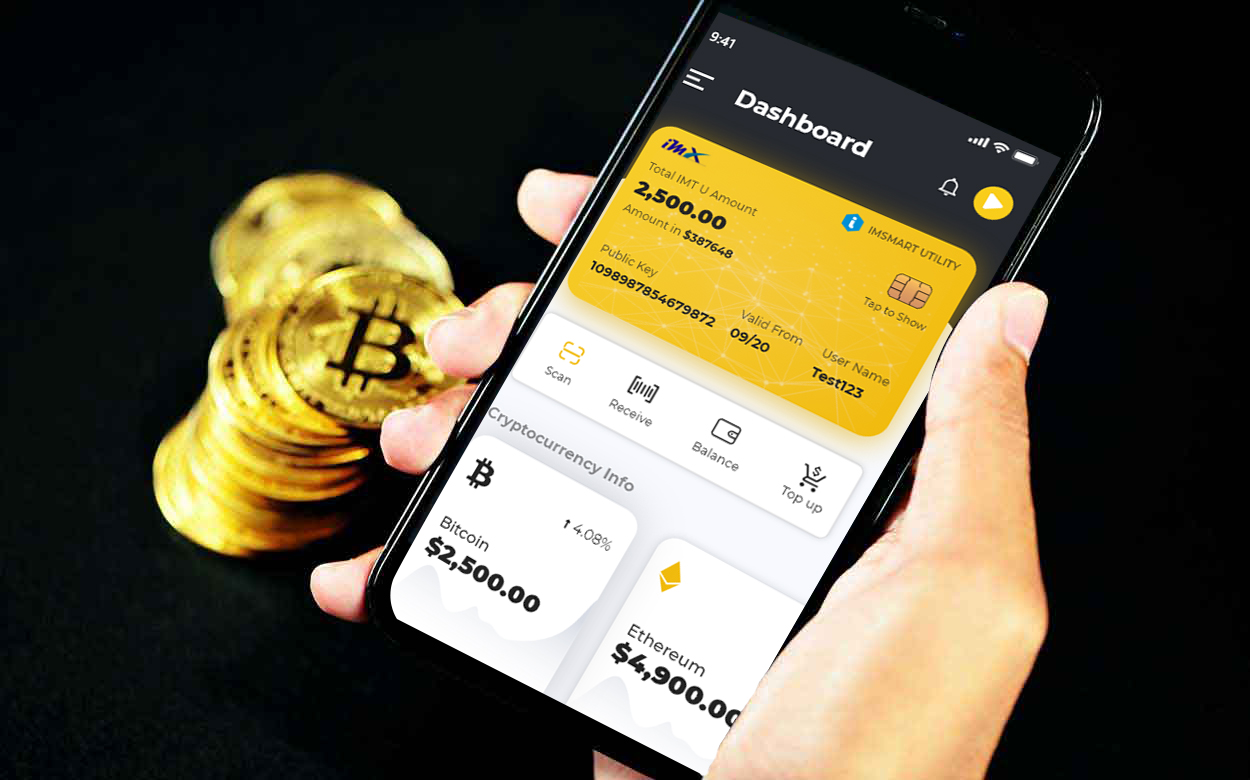Cross-Chain Stable Coin Payments
How often do your "live" transactions in blockchain real-life occur? For many, it isn't often. Although blockchain is a distributed ledger technology that allows transactions to be made between participants without intermediaries, the benefits are well-documented. However, the majority of networks in production currently don't allow for mainstream trading, buying, or selling.
This will change soon as financial institutions, banks, startups, industry leaders, investors, and other stakeholders ask: How can blockchain payments be made practical for everyday use?
Today I am excited to talk about the new digital currency stable coins, which are becoming increasingly popular and can increase the viability for everyday financial transactions on the blockchain.
The dawn of bitcoin and blockchain technology is the beginning of a new era in digital payments. Nearly 6000 cryptocurrencies have made it possible to create a revolutionary virtual payment system using a distributed network without intermediaries. Cryptos are a success story in many industries including finance, healthcare, and supply chain.
The volatility of cryptocurrencies has limited the adoption of cryptocurrency within the payment industry. Blockchain enthusiasts have a better way to solve the problems. Stablecoins are pegged to the asset's value, usually US dollars. This is a popular option. Stablecoins have been around for a while. Most people are still unsure about stablecoins. Let's help them understand Stablecoin and its impact on cross-chain payment in this insight.
What is Stablecoin exactly?
Stablecoins are digital currencies that are tied to assets with stable values such as gold or the US dollar. Stablecoins have a high potential to solve volatility issues when compared to other cryptocurrencies. Because cryptocurrencies are relatively small in market capitalization, they can experience volatility and fluctuations with daily buy/sell orders. Stablecoins seems to be the best digital currency for everything, from daily e-commerce transactions to cryptocurrency token exchanges on Blockchains.
Stablecoins can be understood as a tokenized representation for real-world currencies or fiat currencies. Simply put, Stablecoin will maintain its peg regardless of market fluctuations if 1 USDT or Tether equals 1 USD. There are four main types of stablecoins: Fiat-backed, precious metal-backed, and algorithmic. Read our comprehensive explanation of stablecoins.
A stable coin, as the name implies, is a digital token with low volatility due to its peg to underlying fiat money. It would be able to work in practical applications that involve payments on a blockchain network. This could be used as a store-of-value, a medium for exchange, and a unit of accounting for routine and daily transactions of large and small value.
Applications that use blockchain and stable currencies will become more common and can be used to provide global suppliers, merchants, and consumers with better, faster, more secure, and cheaper alternatives to cash, credit card, debit cards, and wire transfers.
Why do crypto traders and investors use stablecoins instead of crypto assets?

Stablecoins were a great option for trading, particularly since they can be traded around the clock, 24 hours a day, seven days a week -- not like stock markets. Investors could instantly "cash-out" and go to sleep without worrying about how their crypto portfolios were moving overnight. It was much easier to transfer money between stablecoin-based crypto exchanges without having to wait for lengthy banking procedures
Stablecoins made it possible for investors to keep a portion of their crypto portfolio as cash. This allowed them to purchase any coin they wanted at any time without having to depend on their banks' servers.
Some cynics even attribute the increase in crypto trading and the rising coin value to stablecoins, which have attracted more participants to crypto markets.
Because crypto is a free market, it allowed for the development of stablecoins with different functions that satisfy the same fundamental need: stability in value. This means that $100 invested in this cryptocurrency will still be worth the same amount the next day, next week, or next month. A stablecoin that drops or shoots in value would be considered a failure according to its stated objectives.
What is Cross-chain Technology?
Cross-chain technology is an emerging technology that improves interoperability among independent blockchains. Each blockchain is specifically designed to solve the shortcomings of other blockchains. Bitcoin was created to replace traditional currency with digital cryptocurrency. Ethereum, however, came up with smart contracts technology to enable the use of blockchain in Fintech industries. Users cannot share information between the blockchains due to their siloed nature and inability to interoperate.
Blockchains are unique but share the same basic infrastructures. This is where cross-chain technology comes in. Cross-chain interoperability is crucial due to the rapid expansion and introduction of new blockchain projects. This allows blockchain ecosystems to communicate with one another even though they are on different chains. This technology allows blockchain to share data, tokens, and more importantly, Stablecoins among different blockchain networks.
Cross-chain-powered innovations such as cross-chain swap, cross-chain token exchanges, and decentralized token bridges show how cross-chain technology can be used to bridge the gap between blockchain and real-world applications. Cross-chain enhances the interoperability of blockchain and unlocks new opportunities in other industries.
Advantages
Cross Chain allows for greater interactivity between blockchains. This interaction allows each platform's strengths to be combined into a complete solution.
It is possible to use Bitcoin in Ethereum Defi protocols with no restrictions. This allows for large amounts of liquidity to be created and transferred across different blockchain platforms.
Practical application will increase: If blockchains can communicate with one another easily, it will make the exchange of coins much simpler.
What are Cross-chain Stablecoin payments?
Cross-chain payments are similar to cross-chain crypto trading. Cross-chain technology, especially in the context of Stablecoin allows two blockchains with inherently different protocols to interact for Stablecoin payments or sharing Stablecoins. Mike, for instance, wants to send Tether to Jack via Binance Smart Chain. Mike will be entitled to Binance USD from Jack in return. BSC and Ethereum are unique blockchains. They cannot allow blockchains to interact with each other and exchange Stablecoins. This interoperability problem can be solved by cross-chain technology. It creates secure connections between the two blockchains and allows for instant Stablecoin trading.
Stablecoin payments that are cross-chain-enabled can bring many benefits to the issuers. They can buy back coins, mint new coins, and redeem any remaining Stablecoins when they are needed. One can quickly convert volatile assets to Stablecoins and escape the volatility of the crypto market. Due to their limited computing resources and high fees, the first and second-generation Blockchains, Ethereum and Bitcoin, don't support everyday transactions. Users want the freedom to choose the blockchain protocol that best suits their daily payment and settlement needs. They are now able to make payments in cross-chain Stablecoins, without the need for brainstorming.
Why do we need cross-chain stable coin payments?
One of the most popular uses of blockchain technology is a peer-to-peer, decentralized payment system. This was done to remove third-party entities and enable everyone to join a trustless distributed network. Notably, blockchain was initially used to power cryptocurrency transactions. The popularity of alternate currencies like Stablecoins has grown rapidly and many financial institutions have started to issue Stablecoins to facilitate block-based payments.
Stablecoins are similar to crypto tokens. They can be circulated on different blockchains that are isolated from one another. Stablecoins were first transferred between blockchains by a central entity. First, users need to deposit their Stablecoins with this middleman. This is a way to give money custody to a middleman, which breaks the essence of Blockchain's permissionless and decentralization. Cross-chain stable payments remove the need for intermediary institutions to facilitate an exchange or transfer Stablecoins on peer-to-peer, decentralized payment platforms.
Why Choose Perfection Geeks Technologies for your help?

Stablecoin Consulting
Stablecoin consultants can help you understand the prospects of your blockchain project. We will create the roadmap for your project. This includes market analysis, business strategies, and technical aspects.
Whitepaper drafting
Our team includes subject matter experts who can help you communicate your message to your target audience using comprehensive white papers. We provide whitepapers that explain the role of your project in solving real-world issues, keeping in mind your project's potential.
Stablecoin creation
We develop a variety of Stablecoins, including fiat-backed, crypto-currency-backed, precious-backed, and commodity-backed Stablecoins. Multi-collateral Stablecoins are also created based on decentralized Governance.
Marketing with Stablecoin
Our core team of Stablecoin specialists works with you to develop growth hack strategies that reach targeted investors. Our team is proficient in market research activities, such as email marketing and PR outreach.
Services for Payment and AML/KYC
Stablecoin clients can also benefit from our payment services that offer multiple payment options. We integrate AML/KYC into our payment solutions to increase security and help you identify investors.
Management of community support
Our dedicated team offers community support via ticketing systems and instant chats. Investors get their questions answered quickly by our team.
Conclusion
Stablecoin's focus has been to create assets that are less volatile and more liquidity-backed. This industry must face many challenges to be competitive in today's financial market. Stablecoin should work with regulators to develop a better framework that addresses cross-chain stable coin payments. This industry could change the way that virtual payments are made.
Stablecoins combine basic cash-like features with blockchain-inherent property to make digital payments more secure, transparent, frictionless, and instantaneous for a variety of use cases, including cross-border payments.







